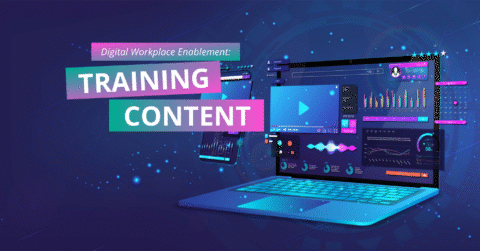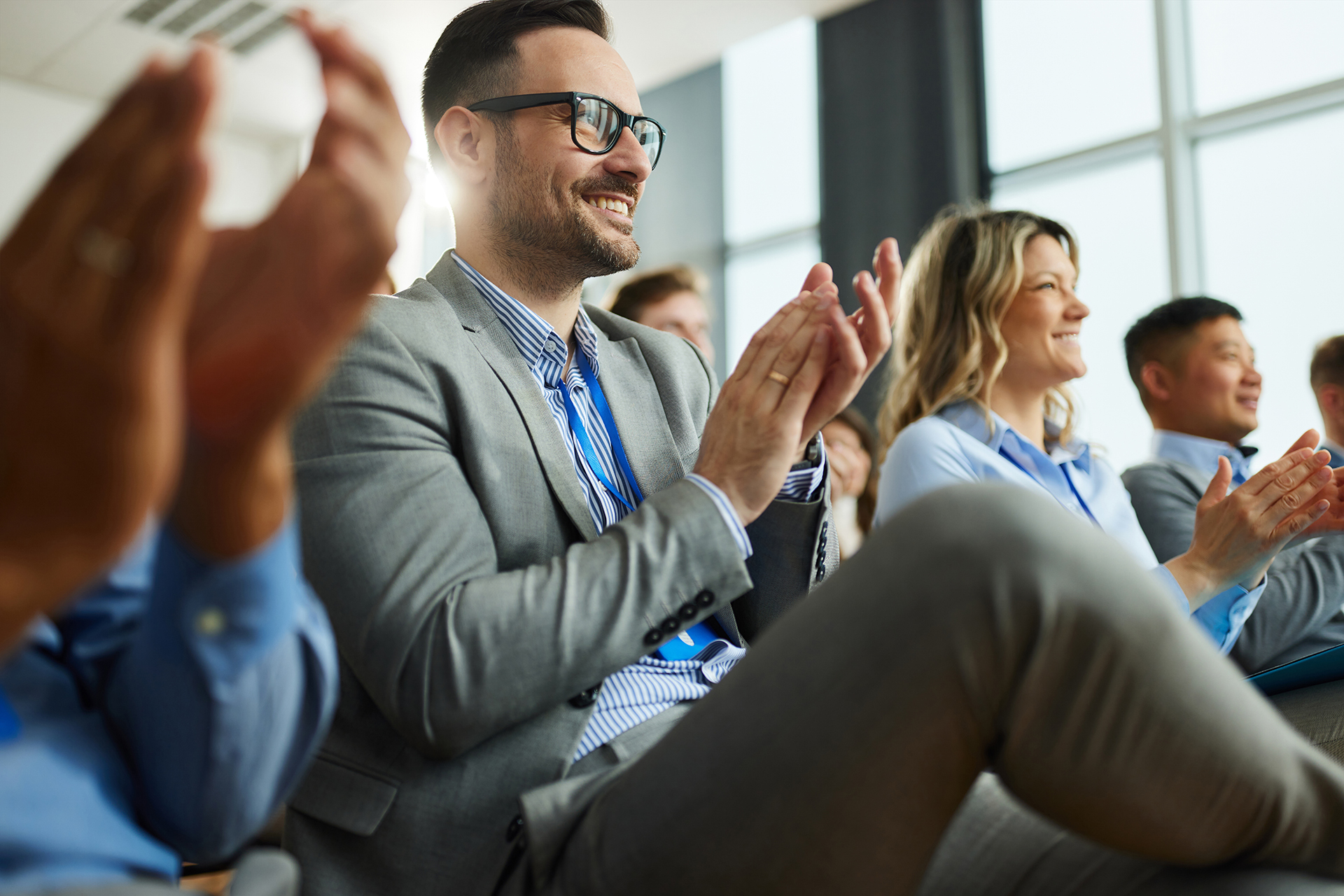Digital Workplace Enablement: Training Content That Never Gets Stale

As businesses continue to evolve and adapt to the digital age, one thing is clear: the success of any digital transformation hinges on the ability of employees to effectively leverage new technologies and processes.
To prepare your workforce for the challenges and opportunities of the modern workplace, you need training content that addresses your employees’ needs.
But how can your training programs keep up with the rapid pace of technology? Leverage training content that never gets stale.
Drive Workforce Training Programs That Work
Training content shapes employees’ learning experiences and directly impacts their ability to acquire new skills and knowledge. However, not all training is created equal.
To achieve optimal upskilling and reskilling outcomes with training, businesses must ensure that their training content is relevant, engaging, and evergreen.
Relevant training content directly aligns with the workforce’s specific needs, helping them understand how to apply the new skills and knowledge to their work and contribute to the organization’s overall success. Engaging training content is designed to encourage active participation in the learning process. But in today’s fast-paced technology landscape, it’s not enough for training to be relevant and engaging – it must also be up to date to ensure it adds value.
That’s why continuous learning is critical.
By providing robust, easily digestible, visually appealing training content that reinforces key workplace modernization concepts, businesses can help their employees develop the skills they need to succeed over the long term.
Download our guide to digital workplace enablement now:
3 Strategies to Modernize Training for New Ways of Working
Here are proven strategies to ensure your training content and programs positively impact your employees and contribute to your digital workplace enablement goals.
1. Supercharge your change management strategy.
Creating a good change management plan is a crucial first step in ensuring effective training programs. A well-designed change management plan will not only ensure employee buy-in but also help businesses identify their employees’ specific needs and skill gaps as they go through digital transformation changes.
More importantly, businesses should effectively communicate the change – what exactly is happening when and where, the value it will add, and who’s impacted.
Here’s a tip: To reduce the strain from your internal campaign, leverage email templates and other customizable communication toolkit necessities instead of building everything from scratch.
2. Keep training content up-to-date.
Given the rapid pace of change in digital workplace modernization, where new tools, methodologies, and practices are introduced regularly, it’s difficult and impractical for a business to update its training content constantly.
At AvePoint, we offer Microsoft 365 Training so our customers’ workforce can adopt and maximize Microsoft tools better – while reducing duplication of work for their L&D admins and managers. This training is updated every three months to match the latest Microsoft 365 releases. And because the course content is centralized, it also eliminates content silos within organizations.
AvePoint’s Microsoft 365 Training:
- Includes over 1,000+ hours of premium Microsoft 365 learning content for end users
- Integrates into Microsoft Teams or your own learning management system (LMS) or intranet
- Enables personalized learning paths
- Includes a communication toolkit out-of-the-box
With training content updated regularly, you’re assured that users gain the latest knowledge to make the most of their new digital workplace.
3. Track and improve training content.
Finally, you need visibility into training completion and engagement rates. By analyzing and understanding how employees engage with training content, businesses can gain valuable insights into areas of friction and identify where employees may be struggling with particular topics or skills.
Armed with this information, your L&D team can develop additional training content that supports existing courses and helps employees build the skills they need to succeed. For example, if the marketing team is struggling with a specific use case, your L&D team can develop targeted training content to help them overcome this challenge. However, this kind of targeted support is only possible if you have the ability to measure engagement.
By tracking completion rates and engagement metrics, you can ensure that your training program is delivering real value to your employees and your business.
Train Your Digital Workforce with AvePoint
Digital workplace enablement isn’t simply migrating data and ensuring it lands in the right place. The adoption of the new digital workplace depends on people and preparing them for new ways of work through continuous training.
Remain agile and innovative in today’s fast-evolving digital landscape by promoting a culture of continuous learning and development to your workforce.
Partner with AvePoint to explore how the Digital Workplace Enablement solutions can make it happen.
Sherian Batallones is a Content Marketing Specialist at AvePoint, covering AvePoint and Microsoft solutions, including SaaS management, governance, backup, and data management. She believes organizations can scale their cloud management, collaboration, and security by finding the right digital transformation technology and partner.





